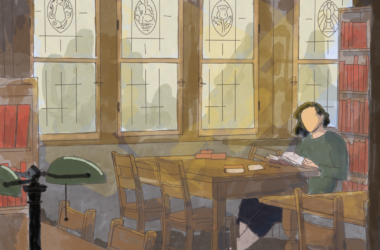This spring, to the beat of drums and the barks of strays, Wes Anderson released his second animated film, Isle of Dogs, nine years after his first, Fantastic Mr. Fox. Both use the century-old technique of stop motion animation. Though I enjoyed both films immensely, I knew nothing of the laborious technique behind their distinct aesthetic, until The McGill Tribune sent me to the community-focused Festival Stop Motion Montreal.
Ten years since its inception, Festival Stop Motion Montreal is thriving. The three day event was organized around the screening of more than 50 films hailing from around the world. The festival also offered seminar classes and interactive exhibits for experimentation with stop motion. This year’s guests included Tim Allen, the animator who brought Isle of Dogs to life, and Dale Hayward, who helped animate The Little Prince (2015).
The stop motion technique is simple in theory: Animators move objects incrementally, and photograph each change in position. To create the sense of movement, the images are played in a sequence, then stitched together in post-production. The process is painstakingly slow, and, typically, 12-24 images account for only one second of film. This process is inexplicably complex for a film like The Empire Strikes Back, where the Hoth battle scene includes dozens of different stork-like ATAT figurines assaulting the rebel base at once.
Despite the charm and beauty of stop motion films, the increased efficiency of computer-generated imagery (CGI) technology threatens to render the artform extinct. The festival’s success, with seven categories of films and multiple premieres, is a notable indicator of stop motion’s resilience in the face of CGI. In an interview with the Tribune, Festival Director, Érik Goulet explained how stop motion is adapting to recent breakthroughs.
“[Stop motion] is already interacting with new technologies,” Goulet said. “From digital cameras for faster capture to ease animator feedback, to 3D printing to speed up the process of lip syncing, and finally VR for more stop motion interactive storytelling.”
The festival emphasized these innovations with its installment of a “Virtual Reality Garden,” in which VR stations enabled festival-goers to explore stop motion animated worlds interactively with Oculus headsets.
I had never appreciated the difference between stop motion and CGI, but, after viewing the screenings, it became apparent to me that the former lends itself to radically more evocative imagery. Texture, colour, and movements feel more enchanting. Each film had such individual flair and sentiment; they would have lost their artistic imperfection and distinct aura had they been animated with CGI.
The festival featured a variety of fantastic, and sometimes head-scratching, independent and professional films. Negative Space, directed by Max Porter and Ru Kuwahata, was my favorite production, a five-and-a-half minute tour de force in storytelling and design. Focusing on a father-son bond, the film follows the life of a small child and his meaningful ritual of packing his father’s suitcase. The story is moving, and the imagery is surrealist: A road becomes a zipper and the inside of a suitcase becomes the playground of a young boy, splashing around in the packed clothes that lap like waves around his body. Independent productions like The Moon’s Milk, directed by Ri Crawford, and Así son las Cosas, directed by Juan Pablo Zaramella, were also festival highlights.
At the festival’s end, I was lucky enough to run into special-guest Allen. We talked Wes Anderson, Star Wars, and what makes stop motion animation so inexplicably special.
“CGI can be more realistic, or even completely lifelike, but stop motion accepts the imperfection and appreciates the fantasy, and somehow it feels more realistic and more emotionally true,” Allen said.








